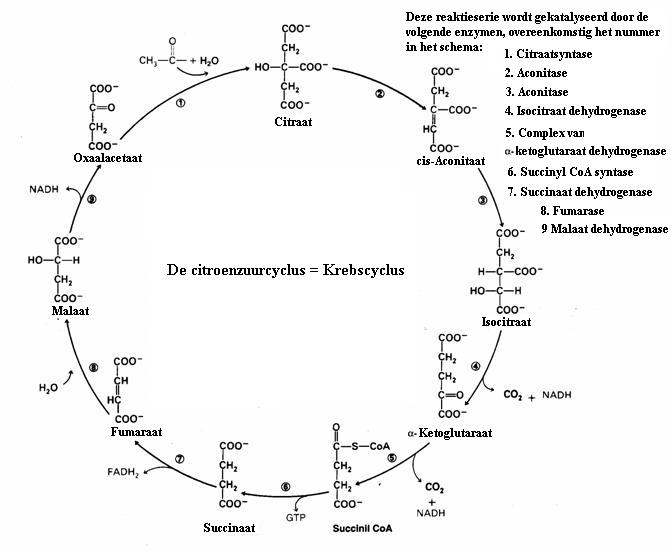The Krebs cycle, cytric acid cycle
Just as the urea cycle, the Krebs cycle takes place at the mythogondria (the energy factories in cells).
The oxydator (Oxygen, O2) helps with the decarboxylation of the citric acid during the course of al those reactions in the cycle.
On complete round of the cycle includes one reduction of the two Carbon atoms that transform to 2CO2.
The connected Hydrogen atoms connect with energy carriers: FAD and NAD, that immediately after that will form ATP. ATP can we consider as a kind of fuel in living organisms.
The ATP molecules are full of chemical energy.

The complet Krebs cycle is built up of nine steps, with the total reaction:
| Citrate
|
|
|

|
oxalic acetate
|
|
| C6H5O72-
|
+
|
H2O
|

|
C4H2O52-
|
+ 2CO2 + 5H·
|
FAD- and NAD-molecules pick up the H-radicals (neutral and single H-atoms), and acquire thus a lot of energy.
Thereafter these H atoms react with Oxygen and form water H2O (a very exothermic reaction).
Water and Carbondioxyde are the end products.
The main function of that cycle is the acquirement and storage of chemical energy.
